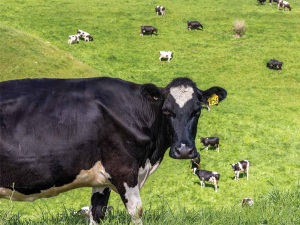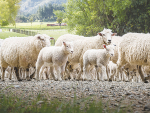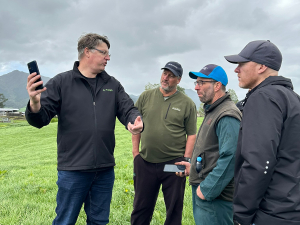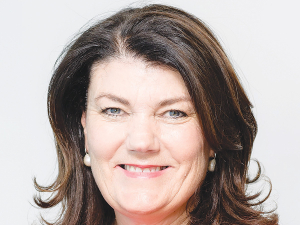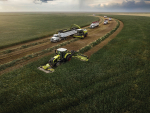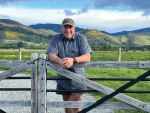But SealesWinslow dairy nutrition specialist Simon Butler cautions BCS gains are not easily won over the dry period and need good planning, feeding and commitment to be achieved.
"You are aiming at a calving BCS score of 5 for cows and 5.5 for first and second calvers. Realistically, you must allow 60-70 days to gain 0.5 of a BCS."
He says the time available may appear sufficient in early May, but it rapidly shrinks when key events are considered.
"You must assume no BCS gain over drying off, which occurs over about 10 days. Then you have the four weeks before calving when the cows' bodies can't gain any more condition because their rumen capacity is impaired and they're using more energy for the growing calf."
Taking these points iinto account, the time available to reach BCS targets is significantly reduced, and the number of days dry also affects other aspects of the herd's health.
"You also have to allow for the mammary gland to recover which takes about six weeks, and dry cow therapy withholding periods, and these can be up to 53 days."
All of these caveats mean every single day between now and calving, you need to optimise their nutrition. And the reasons for getting condition up to where it needs to be are compelling.
"For heifers, a 5.5 BCS is vital because they require more energy post calving to perform while continuing to grow.
"Meanwhile, mature cows calving lighter than they should will result in them taking longer to start cycling and they'll produce less milk during lactation. The risk of various metabolic diseases also increases the further the cow is from the 5.5 BCS target."
Simon urges herd owners and managers to take stock of current herd BCS while there is still time to do something about it.
"If you are still milking and have one eye on drying off, it pays to work backwards from a set drying off date and then make some late lactation dietary changes.
"At the start of that two-week drying-off window, you can start changing your cows' diet by reducing their protein content, while still maintaining dry matter and energy supply. Reducing protein content in their diets results in reduced milk volumes, helping reduce the risk of mastitis in the last few days of milking.
“Using fibrous feeds like lower quality baleage, or even hay, provides the energy required to maintain bodily functions and weight gain while limiting protein supply. Cows can be returned to previously grazed paddocks but high levels of bulky, high fibre feed should still be available.
“If not already employed, once-aday milking at the same time will aid in reducing daily milk flow, freeing up energy for the cow to store for later.”
Simon contrasts this with the conventional approach of “crashing” herd production over a few short days, replacing the milking diet minimal low-quality supplement and sometimes even restricting water intake.
While accomplishing the main aim of ceasing milk flow, it brings productive and animal welfare consequences.
“You risk the loss of BCS, making the dry period even more challenging in trying to get it back on. Mastitis risk also increases, because regardless of feed intake, that cow will still want to make milk for a short period of time, putting stress on the mammary tissue.”
In contrast the controlled process will achieve the two main goals: ceasing milk production while reducing mastitis risk and minimising BCS loss.
“A smarter more effective strategy is through diet composition, not restriction.”
These late lactation dietary changes also play well into the herd’s dry period.
If condition can be at least maintained over the drying off period, it is condition that does not have to be put on post-drying off.
Supplement Use
Warren Tanner, SealesWinslow’s north-west Waikato technical sales rep, says feeding a good carbohydrate rich supplement like maize silage while the herd is still milking can provide bankable BCS to carry into winter that is easier to retain, than try and gain once the herd is dry.
“But you also want to avoid the risk of simply pushing milking too far, encroaching on pasture cover and the time you have to hit calving BCS targets.”
The decisions made now heavily affect next season, setting the baseline for cow condition and pasture covers in spring.
“Allowing for the pre-calving period and dry-off, you really need 90 days to build 1BCS, and that’s assuming cows can overcome the usual metabolic and energy challenges over winter,” says Tanner.
“Supplement should be used strategically to support cow condition and covers going into winter. Try and minimise what body condition they do lose whilst drying off and have a robust winter nutrition plan ready.”
Drying Off?
Key points for successfully ending the season
1. Be realistic – allow adequate time to put condition on over the dry period- work on 0.5 Body Condition Score needing 60-70 days, 1 BCS 90 days.
2. Aim for 5.5 BCS for heifers – they are still growing and need the 5.5 score to continue to do so, and to milk well.
3. Bulk up feed early – allow 2 weeks prior to drying off to shift diet to a bulky, high fibre, lower protein regime.
4. Condition kept is time saved – good management at drying off will reduce BCS loss and having to try and get it back on over the dry period.

